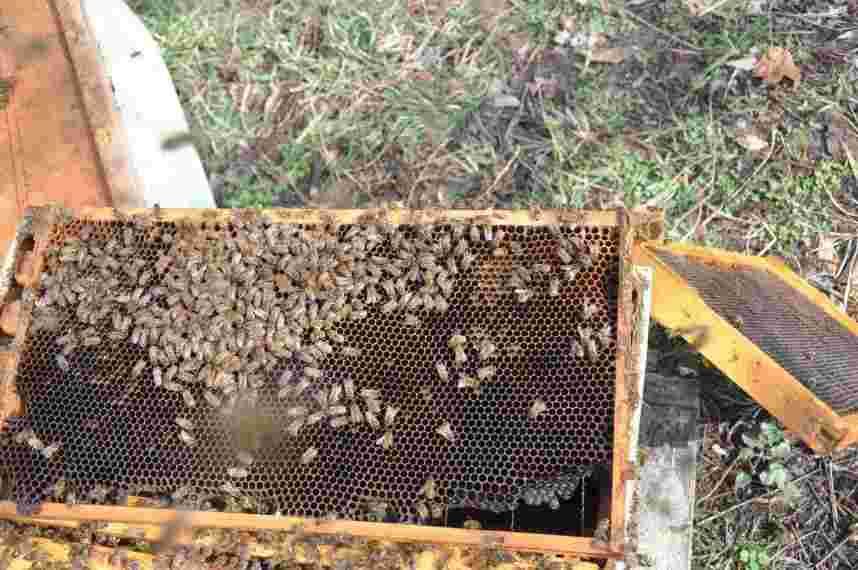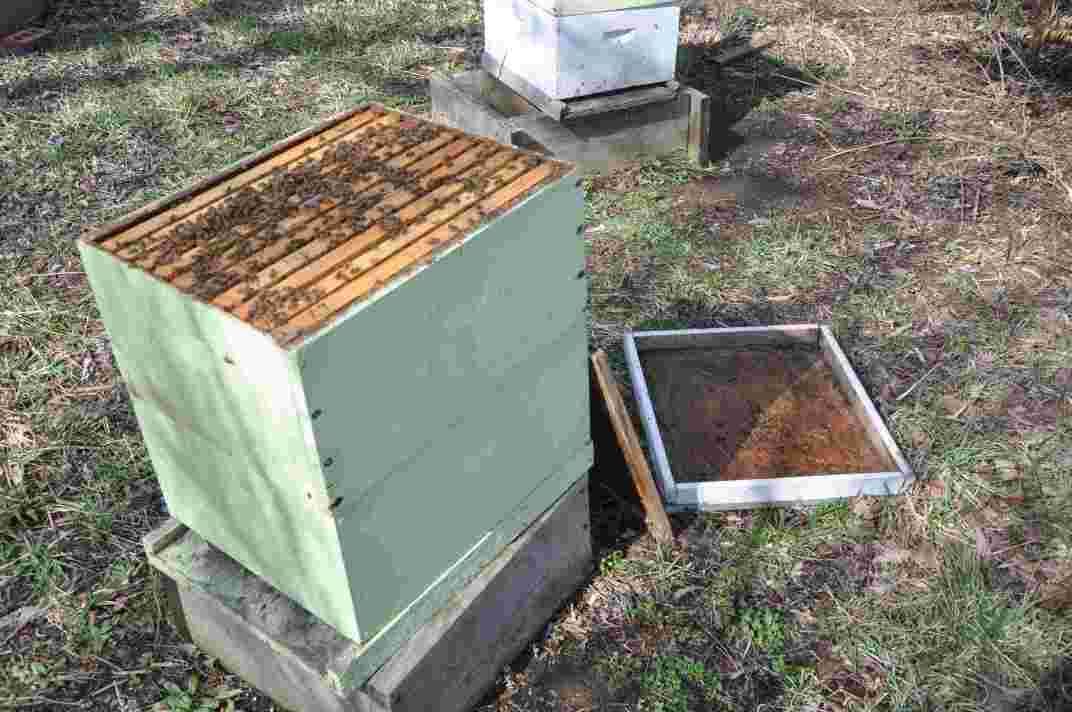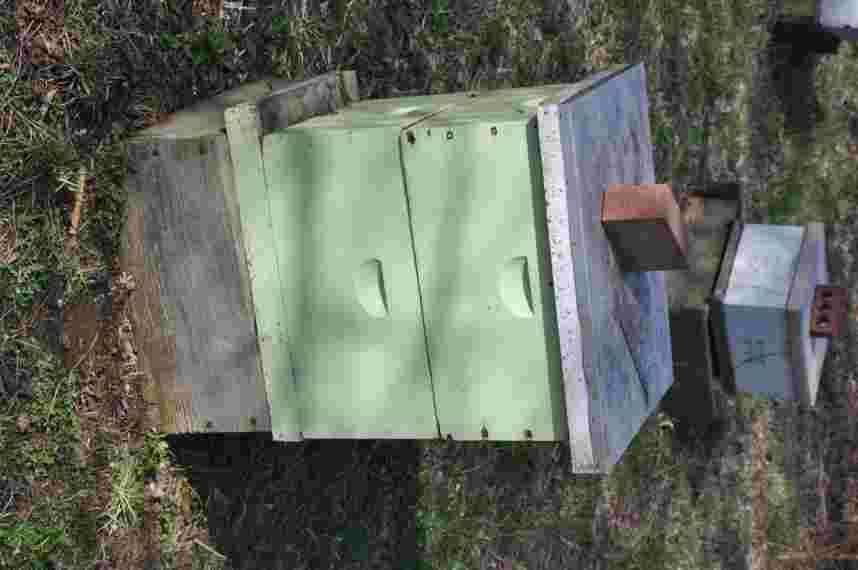Reverse brood boxes, or not? I think this management hive manipulation falls in the optional category, but as often happens not all beekeepers will agree with me, or not all beekeepers agree on the importance of conducting this reversal. This maneuver assumes that bees will more quickly go up in the hive to empty comb, versus down into empty comb.
Seasonal movement between boxes with the hive
The most common configuration for a honey bee hive consists of two brood boxes on the bottom of the hive, with honey supers placed above after the honey flow begins. After honey supers are removed in late summer, the bees and brood will be fairly equally distributed within the two brood boxes. In the fall with the onset of the fall nectar flow (asters & goldenrod) we will see more honey packed into the top brood box in preparation for winter, with a majority of the brood in the bottom box, along with some food stores. During winter the bees in the bottom box will consume the honey stores in the lower box, brood in that box will emerge, and the bees will then move up into the upper box, where most of the honey stores are now contained. We then find that in the early spring most of the bees, along with early eggs & brood, some stored pollen and remaining honey stores, are in the top box of the hive. And typically, the bottom box is empty.
What happens later in the spring?
The bees will need to move back down into the lower box, to utilize the empty comb in those frames to rear brood, and to begin storing new honey & pollen to feed the larvae as part of this spring increase of the bee population. The question remains: Will they move down on their own? There is no doubt they will. Last week I did a quick check in some of my hives, and in one found that the bees had already begun to move down into the lower box, and were rearing brood in that box. Below is a photograph of one of those frames. Note the bees & brood in the top half of the comb in the frame.

When I find that the bees have begun movement into the lower box on their own, I leave the lower box on the bottom, especially if they have begun rearing brood in that box. And I do NOT reverse the hive bodies. Why? Note the location of the bees & brood on this frame. They are in the top part of the frame. If I placed this and similar frames on top of what had been the upper box, there will be a gap of bees between this area of brood, and the bees in the box below. This is a possibility of dividing the hive’s cluster and might on cold nights allow the brood in this area to become damaged. By not reversing the hive bodies in this situation, I remove this possible damage.
Another reason I do like to reverse the hive bodies is because it leaves the lighter box on the top of the hive, and as spring progresses is easier on my back to set off this box to look into the box below. Versus each time lifting off the heavier box that formerly was in the top position.
So how do I go about reversing the hive bodies? Much as I begin any examination of a hive, I start with removing the outer & inner covers, and place the outer cover on the ground upside down. I lean the inner cover against the hive – I am just getting the outer cover out of the way.

By looking between the top box frames, I observe the top box is full of bees, or if I learn this by removing frames, and checking the top box further. I will then smoke the bees and insert my hive tool between the two hive bodies to break the seal between the boxes. The bees will have sealed this gap very tightly during the winter. After breaking the seal between the boxes, I then remove the top box, and place it “catty-cornered” upon the upside down lid (to prevent smashing of bees), which is the practice I always follow when setting a hive body with bees onto the ground.
I then check the bottom box. If the box appears to be empty of bees, I will remove this lower box as well, placing it on the ground. If there is debris on the bottom board, I will scrap it clean. I will then place the full (what at been) top box onto the bottom board, and then place the empty (what had been the bottom) box onto the now lower box. Replace the cover. I have now reversed the hive bodies of the hive. I return the covers to my hive, put the brick back on and I am done.
